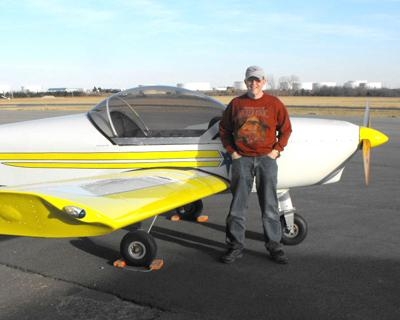Mon, Jul 27, 2015
The FAA Has Updated Their Advisory Circular For Transitioning To Unfamiliar Aircraft
The FAA released an update to an Advisory Circular (AC) on transitioning to unfamiliar aircraft. AC 90-109A is intended to help plan the transition to any unfamiliar fixed-wing airplanes, including type-certificated and/or experimental airplanes. The revised AC has been broadened in scope and provides information and guidance to owners and pilots of experimental, simple, complex, high-performance, and/or unfamiliar airplanes. It also provides information to flight instructors who teach in these airplanes.

Through collaboration between the FAA, GA, and amateur-built community, the recommendations developed in this AC mitigate some of the risks found in transitioning to unfamiliar airplanes. The recommendations are also applicable to pilots transitioning into an unfamiliar type certificated aircraft.
For many years the issue of transition training seems to have been primarily applied when moving from a simple aircraft to a more complicated aircraft. The advisory circular points out that changing to any aircraft you’re unfamiliar with should, if at all possible, involve transition training.
For those in the world of flying home built experimental airplanes, receiving the transition training may not be so easy to find. However, it’s important to understand that transition training can be accomplished, and be effective, in aircraft that is similar to the one being transitioned into even though they are not exactly the same.
One of our ANN staff members who provides transition training and first flight preparation training offered some thoughts on the issue. He said, “Sometimes transition training is not the issue because the builders are so noncurrent they wouldn’t be safe in any airplane.” He added, “I highly recommend that anyone preparing for an initial test flight get at least 4 or 5 hours of flight time in any airplane before beginning familiarization transition training so they can reference what the transition training is trying to accomplish.”
(Image furnished by Earl Downs who provides transition training in his Zodiac 601XL-B)
More News
Airport Marking Aids Markings used on runway and taxiway surfaces to identify a specific runway, a runway threshold, a centerline, a hold line, etc. A runway should be marked in ac>[...]
"It is extremely difficult, if not impossible, for manned aircraft to see a drone while conducting crop-enhancing and other aerial applications at low altitudes and high speeds. We>[...]
Aero Linx: The Skyhawk Association The Skyhawk Association is a non-profit organization founded by former Skyhawk Pilots which is open to anyone with an affinity for the A-4 Skyhaw>[...]
“The T-54A benefits from an active Beechcraft King Air assembly line in Wichita, Kansas, where all required METS avionics and interior modifications are installed on the line>[...]
Aero Linx: Aerostar Owners Association The Association offers the Aerostar Owner a unique opportunity to tap an invaluable source of information concerning the care and feeding of >[...]
 ANN's Daily Aero-Term (04.28.24): Airport Marking Aids
ANN's Daily Aero-Term (04.28.24): Airport Marking Aids Aero-News: Quote of the Day (04.28.24)
Aero-News: Quote of the Day (04.28.24) ANN's Daily Aero-Linx (04.28.24)
ANN's Daily Aero-Linx (04.28.24) Aero-News: Quote of the Day (04.29.24)
Aero-News: Quote of the Day (04.29.24) ANN's Daily Aero-Linx (04.29.24)
ANN's Daily Aero-Linx (04.29.24)



